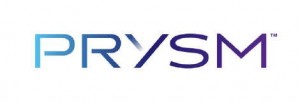Prysm Prepares The Market
Adrian J Cotterill, Editor-in-Chief
In a press release that a number of industry commentators seem to have jumped upon, Prysm, formerly known as Spudnik, announced late on Tuesday what it described as ‘groundbreaking Laser Phosphor Display (LPD) Technology’ – despite this though absolutely no sign or description of a product anywhere in the release.
 The Prysm press release described, in some detail, the technology and that was pretty much it – obviously to our mind laying groundwork for an actual product announcement either before or at ISE in Amsterdam.
The Prysm press release described, in some detail, the technology and that was pretty much it – obviously to our mind laying groundwork for an actual product announcement either before or at ISE in Amsterdam.
We now know for example that Prysm is definitely one of the ‘Invitation Only Stands‘ that we made mention of a week ago – so they will have a product (or products) but obviously not prepared to let the competition see how good or not it is just yet.
That competition is most definitely Christie Digital’s MicroTiles – we know for example that Prysm’s product whilst based on a completely different type of light engine (to a MicroTile) is also modular (the press release states “displays of any shape, size and resolution”) and tiled in nature. The Prysm product we think looks a bit more like a control room cube than an actual smaller modular tile but the effect is in essence the same.
So with no desire to launch or shout about a product the press release is left to describing the technology – Laser Phosphor Display (LPD) technology.
The claims for LPD claims include unsurpassed image quality and low power consumption.
Those low power claims are very hard to believe, we quote “LPD consumes up to 75 percent less power consumption than other display technologies” but we are no experts so will trust the press release for now.
LPD images are created by using a laser engine to excite a phosphor screen – we’d describe that as a little like an inkjet printer – the danger with this sort of technology is that it can cause ‘streaking’ of the image. There are also a lot of moving parts involved which tends to work against the low power consumption quotes but until one sees the image and takes a module apart it’s difficult to judge.
MicroTiles is very good at self-calibrating and there is a claim here also that LPD will do the same “LPD utilizes long-life semiconductor lasers and a self-calibrating architecture to deliver uniform image quality for years of trouble free use”
The usual claims for screens are there also “high brightness, high resolution, high contrast and natural color content with zero motion blur” but again we will have to wait until ISE to see for ourselves.
Paul Semenza, Senior Vice-President at DisplaySearch was quoted in the press release “Prysm’s technology addresses the key segment of large-area displays with the promise of low power operation and scalability,”
He added “This type of technology could open up new markets in consumer and professional applications” – but it’s hard to see what new markets Paul sees that Prysm might open up that Christie Digital MicroTiles wouldn’t (or indeed hasn’t already – especially as Christie have at least a 6 month lead in product to actual market).
About Prysm
Founded in 2005, Prysm, Inc. is a privately held company based in San Jose, California with operations worldwide. Prysm develops, manufactures and sells ecovative large format display products using its patented Laser Phosphor Display (LPD) technology.

February 16th, 2010 at 19:34 @857
I saw the technology at ISE and think it’s got a lot of potential. The low power aspect is very cool – to me the biggest advantage this new LPD technology could have in the market. Image brightness and contrast were both excellent, but there were still some “scanning” artifacts visible. The Prysm team said that is what’s being tuned now prior to production. So we’ll see!! –Lou